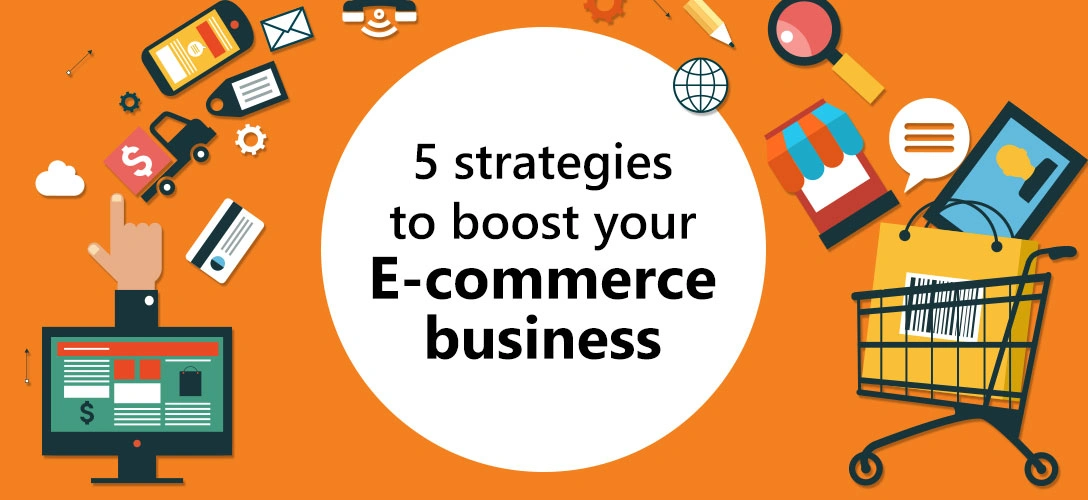Introduction
In the rapidly advancing world of the internet, selling your products and services online has reached great heights. With plenty of websites offering an inexhaustive range of products and services at competitive prices, ease-of-use in payments, fast deliveries, and Smooth customer experience, E-commerce activities are at an all-time high. Because of its immense scope, it has also become highly competitive and complex in nature. Businesses often come up with innovative ideas and solutions that bring exponential growth to their e-commerce franchise. Here we look at 5 strategies to boost your e-commerce business.
5 Strategies to Boost your E-commerce Business
-
Optimize Product Pages:
If your business is not a renowned E-commerce company like Amazon, Flipkart, and Myntra to name a few… Search Engines play a major role in showcasing your products to prospective consumers. Search engines match your product pages and display it to the consumer in their search results. For example, Google’s attempts to display the most relevant and trusted sources through its SEO algorithm to its searcher. Effectively optimize your web pages with SEO best practices to help your product page rank higher among search results. Further, high-quality images can improve the appeal of your webpage and interface and can promote higher traffic to your website.
-
Utilize Social Media Campaigns:
Social Media can help you make your brand known to a global audience. Maintaining a strong social media presence with frequent good-quality posts can help you raise brand awareness, create a brand voice and showcase its offerings, increase viewer engagement with your brand, and promote future sales. With recent updates, you can create your business account on popular social media platforms and sell your products directly to the consumer. Paid Ads can be a great way to reach more users and generate leads.
-
Utilize SEO for E-commerce Websites:
As discussed before, Search Engine Optimization can do wonders for your E-commerce business. SEO specialists can help guide you on optimizing your business for search engines. Some common ways to boost your webpage’s visibility are using relevant keywords and meta tags in your content, along with high-quality content and images that answer consumer queries and present them with satisfying solutions. Tools like Google Ads Keyword Planner, SEMRush, Keyword Surfer, and Ubersuggest can be used to gain insights into selecting relevant and in-demand keywords for your website.
-
Enhance User Experience:
The user’s experience can include their visit to your website, the content available, how easily and fast they are allowed to navigate to their preferred section, how they purchase your products, the on-site support they receive for queries and issues, payment options available, encryption, and more. Creating a seamless user experience looks like fast-loading webpages, easy navigation, appealing visuals, on-site support, and FAQs to solve queries and issues, quality of content, and the purchase and payment process.
-
Leverage Email Marketing:
Email Marketing can be an effective tool to build and maintain lasting relations with old customers of your business. It allows you to communicate and convey your message frequently and generates an opportunity for communicating on a personal level with your customers. Consider crafting your emails with different marketing appeals and ensure that the headline is captivating and the content is engaging. Constantly renewing or creating(In the case of email marketing for leads) customer interest is pivotal to a stable, growing, and satisfied customer base. It can also be used to create potential leads and invite new customers.
Table Of Content
Other Blog
Conclusion
As mentioned earlier the scope of e-commerce business is vast, but so is the competition.Apply strategies that allow you to make the most out of your E-Commerce website optimization for businesses like optimizing product pages and User interface to make it seamless, simple, and easy to navigate, optimizing content with SEO principles, leveraging Email marketing, and using the endless possibilities that social media provides to expand your business, can help you drive growth and expansion in your E-commerce business.

